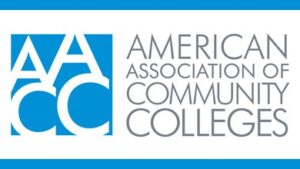 Although community colleges were originally established to be transfer institutions to prepare students to enter universities, they’re now adapting their programs and structures to train tomorrow’s workforce. It’s a vital role, as technology and competition shift faster every year. Today, the 1,026 community colleges across the U.S. are leaders in workforce development, especially in the trades and in the growing Industry 4.0 space.
Although community colleges were originally established to be transfer institutions to prepare students to enter universities, they’re now adapting their programs and structures to train tomorrow’s workforce. It’s a vital role, as technology and competition shift faster every year. Today, the 1,026 community colleges across the U.S. are leaders in workforce development, especially in the trades and in the growing Industry 4.0 space.
 How community colleges are adapting to this important role was the core theme of the Workforce Development Institute of the American Association of Community Colleges (AACC), held January 28-31, 2025 in Coronado, California. This year’s theme was aptly titled Uncharted Courses.
How community colleges are adapting to this important role was the core theme of the Workforce Development Institute of the American Association of Community Colleges (AACC), held January 28-31, 2025 in Coronado, California. This year’s theme was aptly titled Uncharted Courses.
American Association of Community College “Uncharted Courses”
Compared to other institutions of higher learning, community colleges are lauded for being nimbler and more responsive to regional needs when developing new programs and courses. Still, community college leaders recognize that they evolve at a slower pace than the business world. Or, as one conference attendee put it: “Business looks at a watch to track program implementation while colleges look at a calendar.”
Businesses need skilled workers now, and people looking to enter careers cannot afford to wait until the next academic year to enroll in training. So, the pace of program development at community colleges must accelerate. The big question: How can colleges fast-track new programs without sacrificing instructional quality?
More synergy between industry and academia
The consensus at the conference was that we all have to work together much more closely. That includes colleges, K-12 schools, Career and Technical Education (CTE) centers, workforce development agencies, other allied nonprofits, and the accreditation boards at the state and federal levels.
The good news is that successful models are emerging, and the conference amplified some examples, providing AmeriCOM and our academic and industry partners with fresh ways to coordinate our efforts as we support the growth of the U.S. precision optics manufacturing industry.
AmeriCOM’s conference takeaways
Josanne DeNatale, AmeriCOM’s National Marketing and Workforce Operations Director, attended the AACC conference. Her key takeaways bode well for the future of these training programs, and, ultimately, a stronger national network in the optics, photonics, imaging, and laser (OPIL) manufacturing space. Here are her insights from the conference.
- Apply innovative business thinking to developing new training models – Industry advisory boards can help community colleges develop training programs in advanced manufacturing. One promising new model is BILT (Business Industry Leadership Training) Academy, which provides a more sustainable and higher impact approach. Other examples abound.
- Reach the right students in a changing landscape – The number of students in high school are declining, and among them, a growing number are concerned about taking on the debt associated with attending four-year degree programs. Affordable training programs offered through community colleges are an attractive option to this audience as well as to adult learners with “some college, but no credentials.” Building awareness about career pathways in precision optics manufacturing within these audiences is essential to building a skilled workforce.
- Workforce development is economic development – Reconfiguring how community colleges are structured to open up more career pathways more quickly to more students is key. People who are trained with the skills needed by industry are more productive and choose to stay with a company, leading to less employee turnover. “When employees are equipped with relevant skills, they contribute more effectively to their industries, earn higher wages, and stimulate economic growth,” says Forbes Magazine in the article, How Workforce Development Boosts Career and Economic Activity.”
- Change the perception of where the jobs are – Building the U.S. manufacturing sector means changing perceptions of what jobs in manufacturing really means today. Industry 4.0 is far from the “dark and dangerous shift work” of previous generations. For the optics industry, these misperceptions are coupled with a lack of awareness of precision optics manufacturing. It’s crucial to grow an ambassador corps for the optics, photonics, imaging, and laser industries.
Watch for a deeper exploration of these subjects in future issues of the Optics Insider.